Scaffolding Companies Auburn
Top 10 Scaffolding Solutions in Auburn
Get up to 3 Scaffolding Experts quotes for your project today! Compare profiles, reviews, accreditations, portfolio, etc... and choose the best offer.
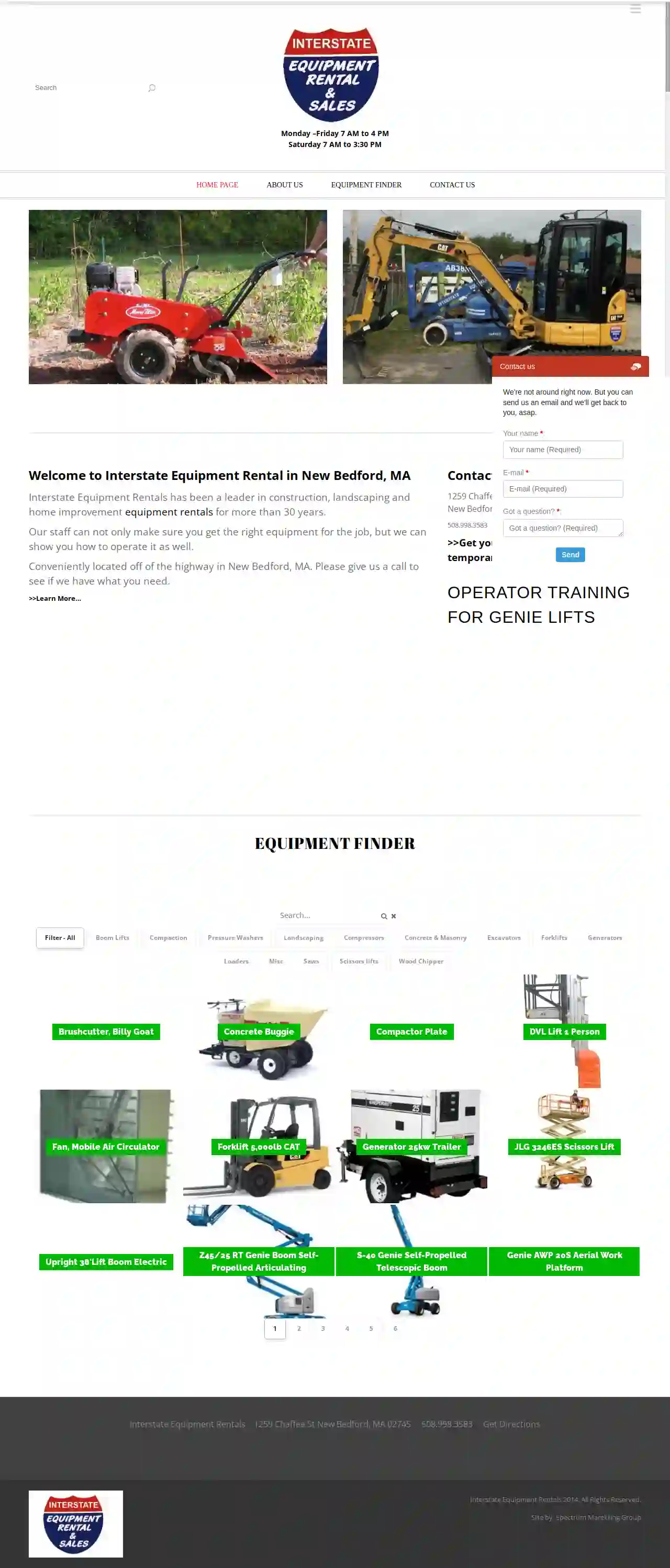
Interstate Equipment Rental & Sales
4.327 reviews1259 Chaffee St, New Bedford, 02745, USWelcome to Interstate Equipment Rental in New Bedford, MA. Interstate Equipment Rentals has been a leader in construction, landscaping and home improvement equipment rentals for more than 30 years. Our staff can not only make sure you get the right equipment for the job, but we can show you how to operate it as well. Conveniently located off of the highway in New Bedford, MA. Please give us a call to see if we have what you need.
- Services
- Why Us?
- Gallery
Get Quote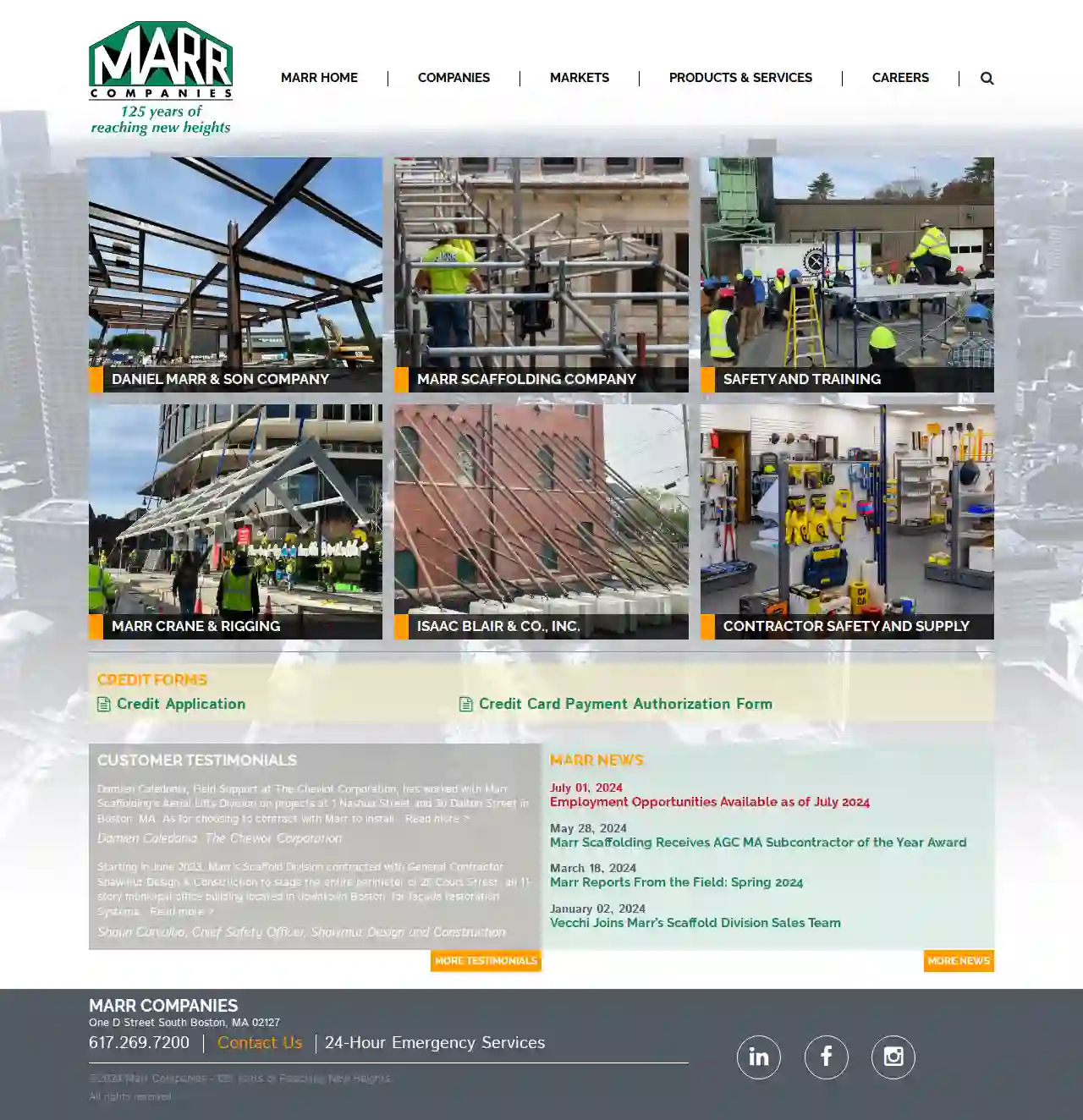
Marr Scaffolding Company
4.421 reviewsBoston, MA, 1 D Street, 02127, USMarr Companies is a leading provider of safety and training solutions, with over 125 years of experience in the industry. Our mission is to provide top-notch services to our clients, ensuring their safety and well-being. We offer a wide range of services, including aerial lifts, aluma joists, angel's wings, bleachers, boom lifts, bracing, building remediation, calibrated jacking, chutes, column replacement, contractor's safety and supply warehouse, construction elevators, cranes, dryair, elevators, emergency services, enclosures, environmental work, erection and dismantling, fall protection products, grandstands, ground thaw, heat wagon, hi-lite, hoists, hydro mobile, ladders, lulls, mast-climbing work platforms, needle shoring, plank, post shores, precast erection, pre-construction planning, redi-fence, rigging, safety, safety products, scaffolding, scissor lifts, sectional scaffold, shore-x, shoring, sidewalk protection, specialty shoring, specialty rigging, steel erection, suspended scaffolds, systems scaffold, temporary heat, temporary seating, trucking, wall bracing, and warehousing. Our team of experts is dedicated to providing the highest level of service and support to our clients. We are fully accredited and insured, and we take pride in our work. We are committed to reaching new heights and providing the best possible solutions to our clients.
- Services
- Why Us?
- Accreditations
- Our Team
- Testimonials
- Gallery
Get Quote
Lynn Ladder & Scaffolding Co., Inc.
4.36 reviewsLynn, MA, 654 Chestnut St, 01904, USLynn Ladder & Scaffolding has been a family-owned business since 1946. Founded by Bernie Kline, the company has been dedicated to providing high-quality ladders and scaffolding to contractors in the New England area. Today, the third generation of Kline's continues to pursue this goal across the Eastern United States. With a focus on service and quality, Lynn Ladder strives to provide reasonably priced, high-quality products in a timely manner. The company offers a range of products, including frame scaffold, stages and planks, van and truck racks, ladders, hydro mobile, system scaffold, alum-a-pole, shoring, debris chutes, fall protection, swing stage, and more. With over 65 years of service, Lynn Ladder has established itself as a trusted provider of rental equipment and specialty products. The company's qualified employees can handle the scaffold needs of contractors, both large and small, and offer safety training programs to ensure the well-being of employees and customers. At Lynn Ladder, the employees are the most valuable asset, making up the heart of the company. From warehouse crews to corporate staff, each and every one of them is essential to the company's success.
- Services
- Why Us?
- Accreditations
- Gallery
Get Quote
Lynn Ladder & Scaffolding Co., Inc.
3.813 reviewsLynn, MA, USLynn Ladder was founded in 1946 by Bernie Kline. Bernie’s mission was to provide Ladders and Scaffolding to contractors in the New England area. Today, the third generation of Kline’s continue to pursue that goal across the Eastern United States. Service and quality are paramount in this endeavor. At each of the Lyn-Lad companies, we strive to provide each of our customers with reasonably priced, high quality products in a timely manner.
- Services
- Why Us?
- Accreditations
- Gallery
Get Quote
Lynn Ladder & Scaffolding Co., Inc.
4.253 reviews117 Turnpike Rd, New Ipswich, 03071, USLynn Ladder was founded in 1946 by Bernie Kline with a mission to provide ladders and scaffolding to contractors in the New England area. Today, the third generation of Kline's continue to pursue that goal across the Eastern United States. Service and quality are paramount in this endeavor. At each of the Lyn-Lad companies, we strive to provide each of our customers with reasonably priced, high quality products in a timely manner. One of the main focuses of our company is rental equipment. This is backed by over 45 years of scaffolding experience. Our qualified employees can handle the scaffold needs of contractors, both large and small. Our services range from engineering to manufacturing specialty products that are required by contractors to complete their jobs. We continue to manufacture many products in the United States. This provides many local jobs and allows us to make different custom products with a quick turnaround, giving us a competitive edge. Safety is always a factor in renting and selling the many products we manufacture and distribute. Lyn-Lad has offered safety training programs for many years. We will continue to do so for the safety of our employees and customers. It is our employees that comprise our most valuable asset at the Lyn –Lad companies. Each and every one of them makes up the heart of the Lyn-Lad Companies. From our warehouse crews to our corporate staff, we could not succeed without them.
- Services
- Why Us?
- Accreditations
- Gallery
Get Quote
Skyway Canada LTD
170 Claireville Drive, Toronto, M9W 5Y3, USAt Skyway Canada, we pride ourselves on being a leading provider of industrial and commercial services. With a rich history and a strong mission to deliver exceptional results, we have established ourselves as a trusted partner for businesses across Canada and the United States. Our team of experienced professionals is dedicated to providing top-notch services, including industrial scaffolding, insulation, painting and protective coating, fireproofing, abatement, rope access, and more. We also offer commercial services such as access scaffolding, swing stage, shoring, fencing, hoardings, and debris chutes. At Skyway Canada, we are committed to safety and quality. We are proud members of various industry associations and have received numerous accreditations, including Avetta safe auditing and Complyworks. Our team is dedicated to providing exceptional service and ensuring that our clients are completely satisfied with our work.
- Services
- Why Us?
- Accreditations
- Gallery
Get Quote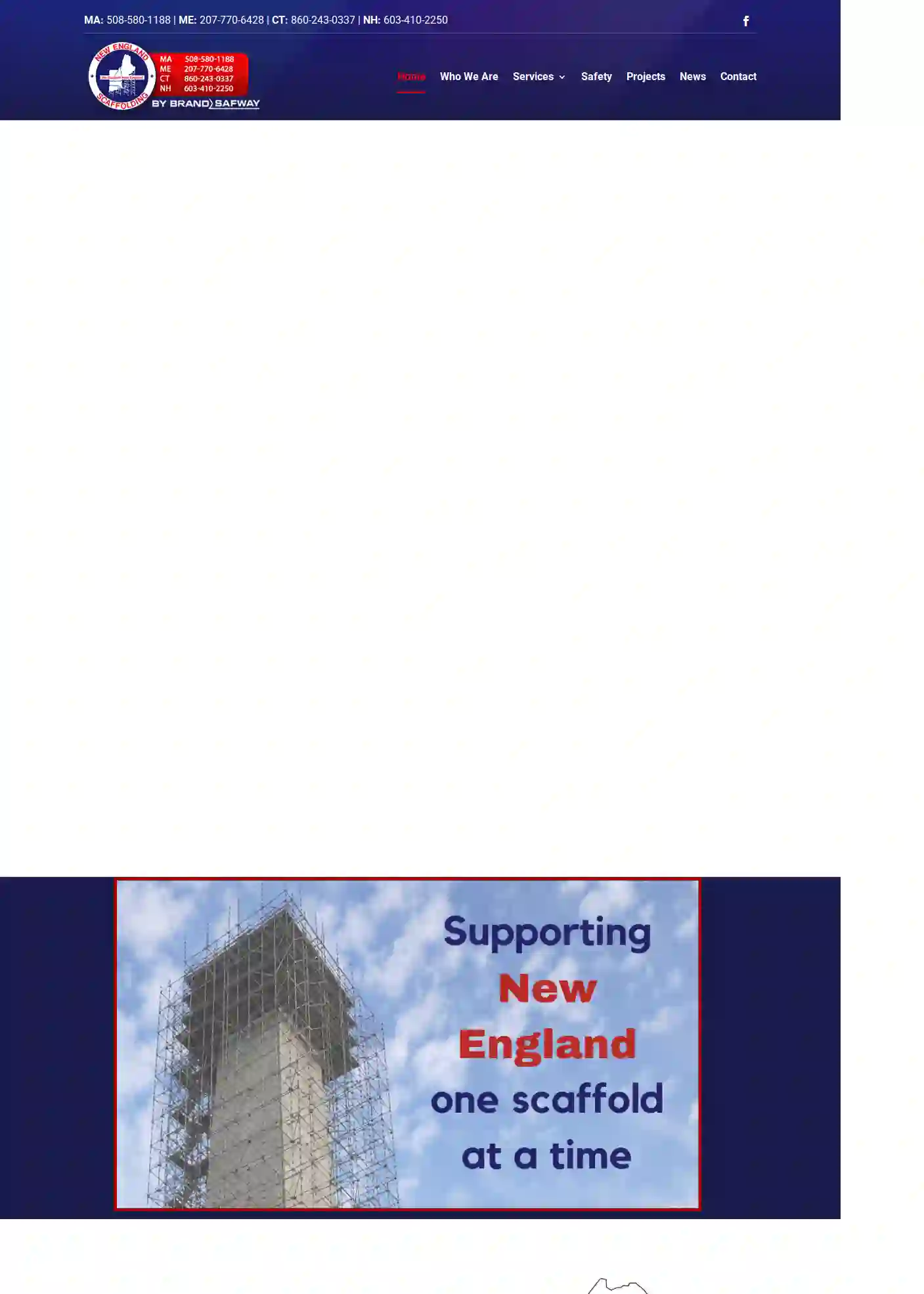
New England Scaffolding
4.214 reviews412 R Washington St, Norwell, 02061, USNew England Scaffolding is a leading provider of scaffolding solutions for various industries. With offices in Massachusetts, Maine, Connecticut, and New Hampshire, we offer a range of services including scaffolding, shoring, suspended scaffolding, containment, temporary fencing, and debris chutes. Our team of experts will work with you to design a custom solution that meets your specific needs and ensures your project is completed safely and efficiently. With over 20 years of experience, we have established ourselves as a trusted partner for many clients. Contact us today to learn more about our services and how we can help you achieve your goals.
- Services
- Why Us?
- Gallery
Get Quote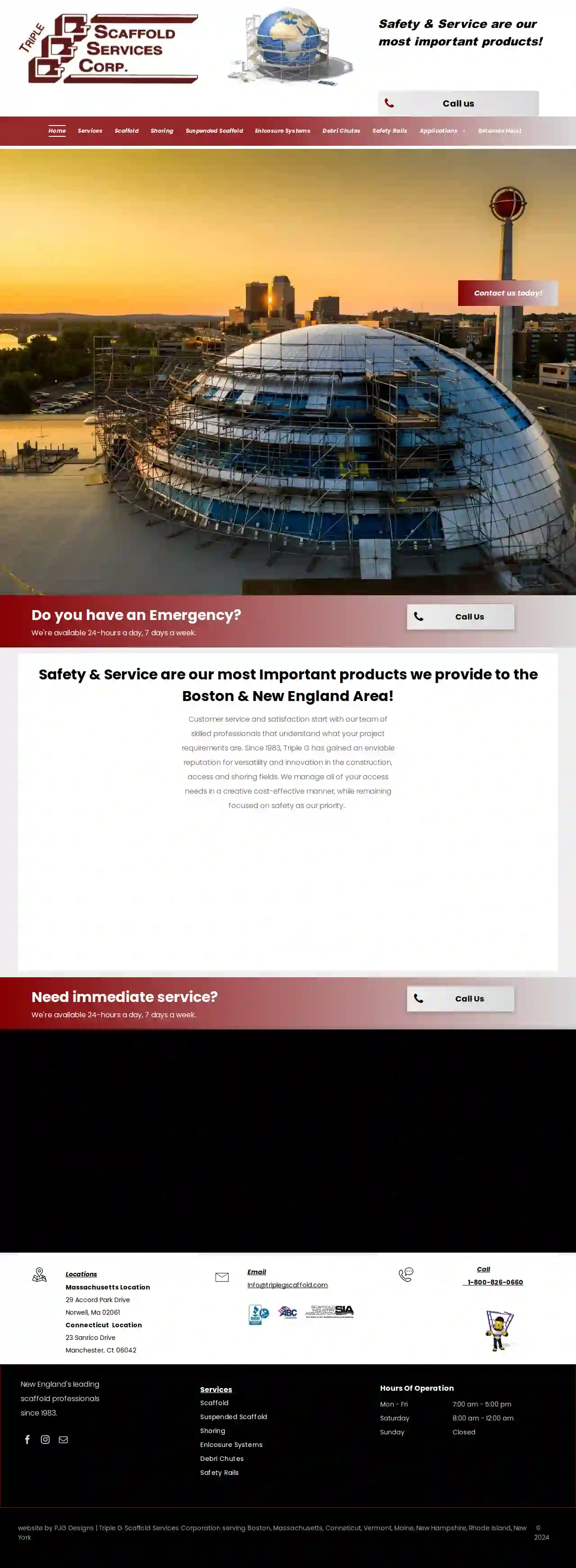
Triple G Scaffold Services Corporation
4.610 reviews29 Accord Park Drive, Norwell, 02061, USSafety & Service are our most important products! Call us Safety & Service are our most Important products we provide to the Boston & New England Area! Customer service and satisfaction start with our team of skilled professionals that understand what your project requirements are. Since 1983, Triple G has gained an enviable reputation for versatility and innovation in the construction, access and shoring fields. We manage all of your access needs in a creative cost-effective manner, while remaining focused on safety as our priority.
- Services
- Why Us?
- Gallery
Get Quote
Advantcraft Scaffold Rental
52 reviews123 Scaffolding Lane, Upton, MA, 01568, USAdvantcraft is a leading manufacturer, renter, and seller of scaffolding and related components. They offer competitive rental options for customers with limited needs. Their product range includes the 3948 Series Scaffold, which can be expanded to 30 ft. Deck Height with separately available Endframe Sets, Outriggers, and Tiebrace attachments.
- Services
- Why Us?
- Accreditations
- Our Team
- Testimonials
- Gallery
Get Quote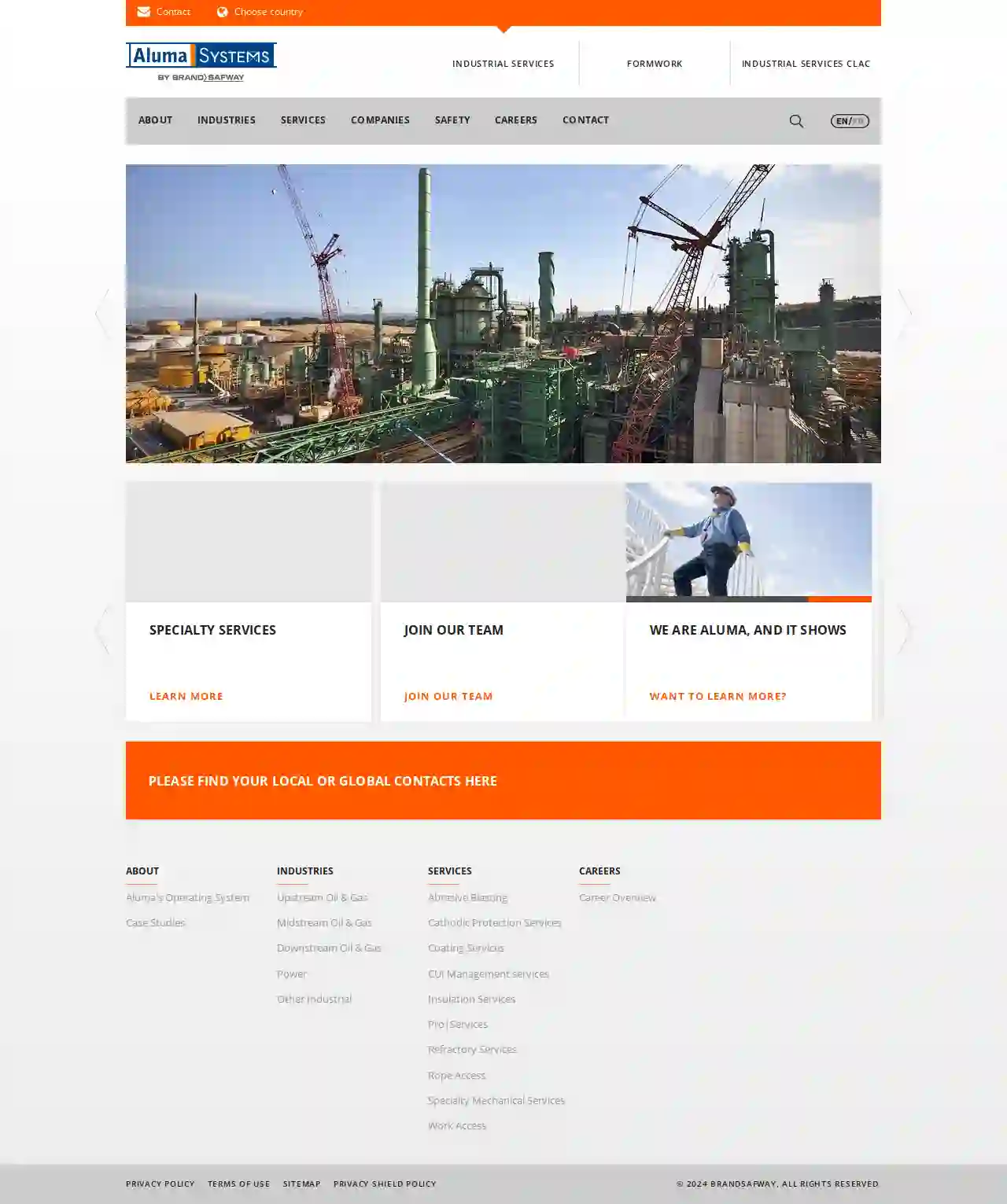
Aluma Systems (Industrial Services)
450 reviewsLynn, USAt Aluma Systems, we are a premier provider of integrated specialty services to the global energy, industrial and infrastructure markets. Our extensive portfolio of specialized industrial service offerings includes scaffolding, coatings, insulation, refractory, formwork and shoring, specialty mechanical services, and other related crafts. With an award-winning safety record and in-depth policies, systems and programs designed to engage the entire workforce in the delivery of safe work on all projects, we believe Aluma is more than a company with a great safety program...Aluma is a safe company.
- Services
- Why Us?
- Gallery
Get Quote
Over 2,353+ Scaffolding Companies registered
Our scaffolding companies operate in Auburn and surrounding areas!
ScaffoldingHQ has curated and vetted Top Scaffolding Businesses in and around Auburn. Find a reliable pro today.
Frequently Asked Questions About Scaffolding Companies
- Regulations: Local regulations often specify minimum inspection intervals.
- Project Type and Duration: Long-term projects or those in challenging environments may require more frequent inspections.
- Weather Conditions: Severe weather (storms, high winds) can necessitate additional inspections.
- Any Alterations or Modifications: Any changes to the scaffolding structure require re-inspection.
- Project Size and Complexity: The height, configuration, and accessibility of the scaffolding will influence the amount of materials and labor required.
- Scaffolding Type: Different scaffolding systems (tube and clamp, system scaffolding, suspended scaffolding) have varying costs.
- Duration of Rental: The length of time you need the scaffolding will affect the overall rental price.
- Location: Labor costs and material availability can differ based on your location.
- Additional Services: Some companies may offer additional services like erection, dismantling, or transportation, which can add to the cost.
- Licensing and Insurance: Verify their licenses are current and that they have adequate insurance coverage.
- Experience: Choose a company with a history of successfully completing similar projects. Ask for references and check their portfolio.
- Safety Record: Inquire about their safety practices and accident history. A strong safety culture is essential.
- Professionalism: Observe their communication, responsiveness, and attention to detail. A reputable company will be organized and transparent.
- Reviews and Testimonials: Read online reviews and feedback from previous clients to assess their reputation.
- Industry Affiliations: Membership in professional organizations like the NASC (National Access & Scaffolding Confederation) indicates a commitment to industry standards.
- Online Directories: Use specialized directories like ScaffoldingHQ to search for scaffolding companies in your area.
- Search Engines: Use Google or other search engines to search for 'scaffolding companies near me' or 'scaffolding rental [your location]'.
- Local Construction Associations: Contact local construction associations for recommendations.
- Word-of-Mouth Referrals: Ask friends, family, or colleagues for recommendations based on their past experiences.
How often should scaffolding be inspected?
How much does scaffolding cost to rent in the USA?
How do I know if a scaffolding company is reputable?
How can I find scaffolding companies near me?
How often should scaffolding be inspected?
- Regulations: Local regulations often specify minimum inspection intervals.
- Project Type and Duration: Long-term projects or those in challenging environments may require more frequent inspections.
- Weather Conditions: Severe weather (storms, high winds) can necessitate additional inspections.
- Any Alterations or Modifications: Any changes to the scaffolding structure require re-inspection.
How much does scaffolding cost to rent in the USA?
- Project Size and Complexity: The height, configuration, and accessibility of the scaffolding will influence the amount of materials and labor required.
- Scaffolding Type: Different scaffolding systems (tube and clamp, system scaffolding, suspended scaffolding) have varying costs.
- Duration of Rental: The length of time you need the scaffolding will affect the overall rental price.
- Location: Labor costs and material availability can differ based on your location.
- Additional Services: Some companies may offer additional services like erection, dismantling, or transportation, which can add to the cost.
How do I know if a scaffolding company is reputable?
- Licensing and Insurance: Verify their licenses are current and that they have adequate insurance coverage.
- Experience: Choose a company with a history of successfully completing similar projects. Ask for references and check their portfolio.
- Safety Record: Inquire about their safety practices and accident history. A strong safety culture is essential.
- Professionalism: Observe their communication, responsiveness, and attention to detail. A reputable company will be organized and transparent.
- Reviews and Testimonials: Read online reviews and feedback from previous clients to assess their reputation.
- Industry Affiliations: Membership in professional organizations like the NASC (National Access & Scaffolding Confederation) indicates a commitment to industry standards.
How can I find scaffolding companies near me?
- Online Directories: Use specialized directories like ScaffoldingHQ to search for scaffolding companies in your area.
- Search Engines: Use Google or other search engines to search for 'scaffolding companies near me' or 'scaffolding rental [your location]'.
- Local Construction Associations: Contact local construction associations for recommendations.
- Word-of-Mouth Referrals: Ask friends, family, or colleagues for recommendations based on their past experiences.